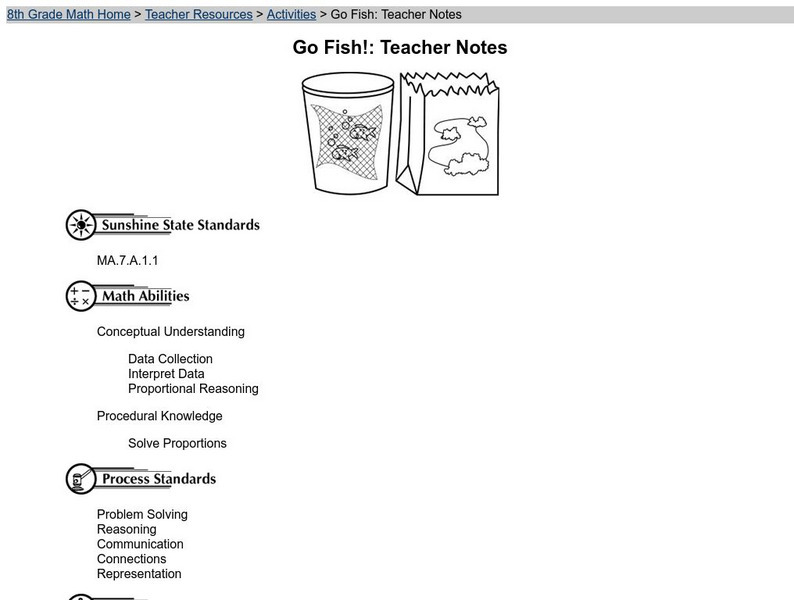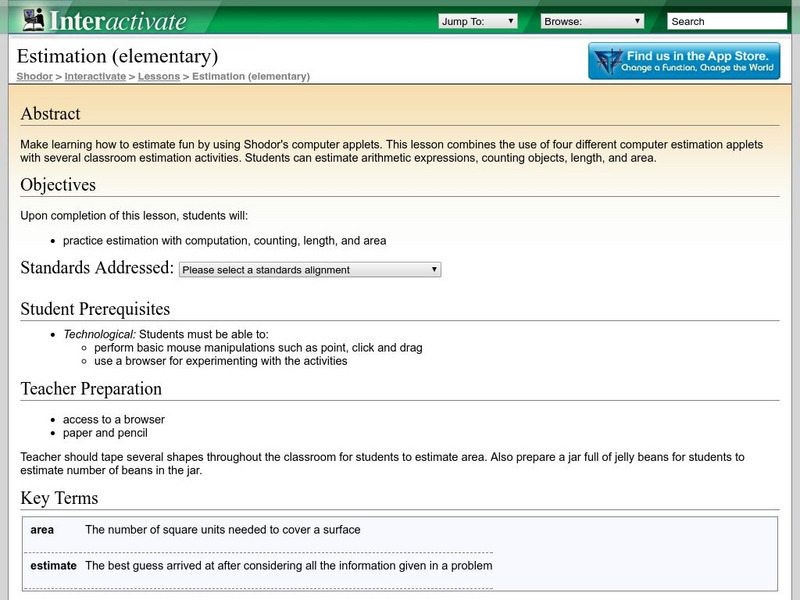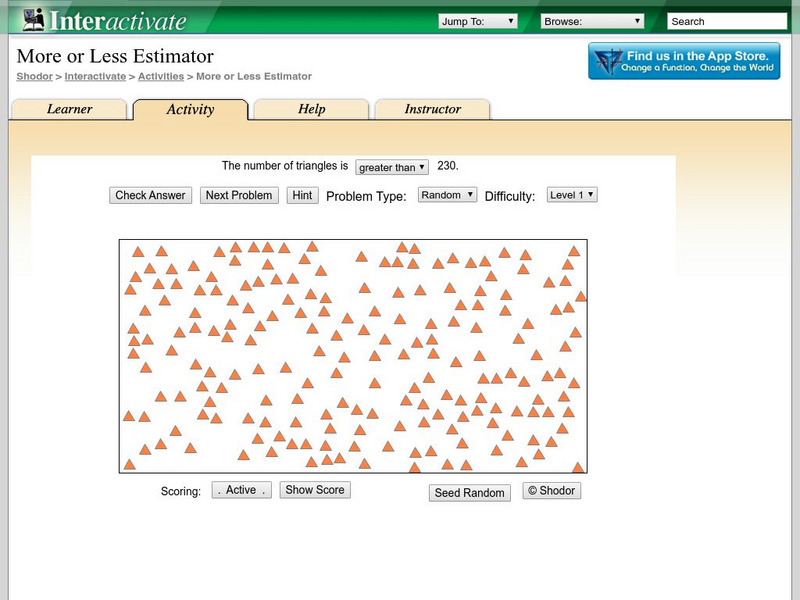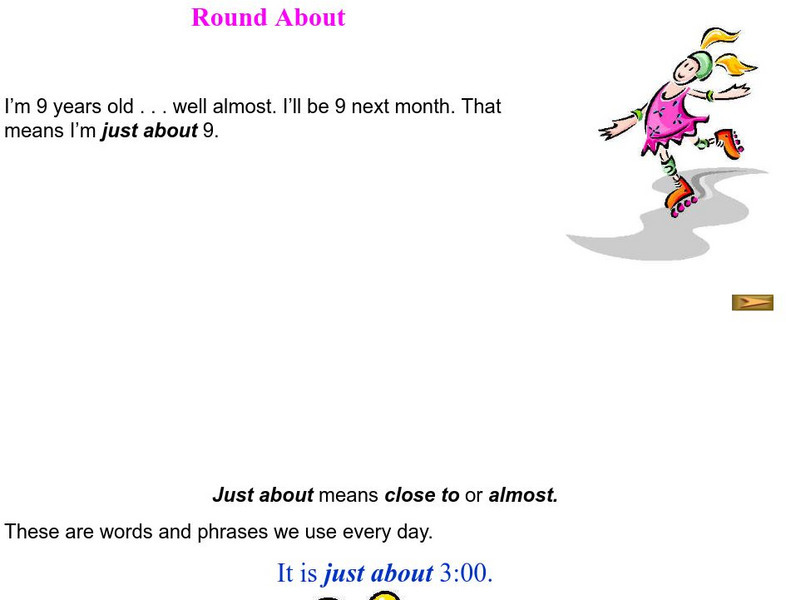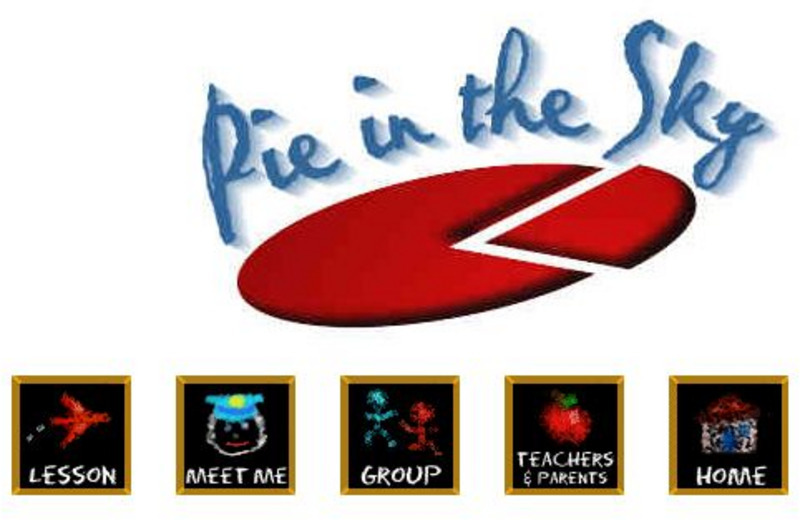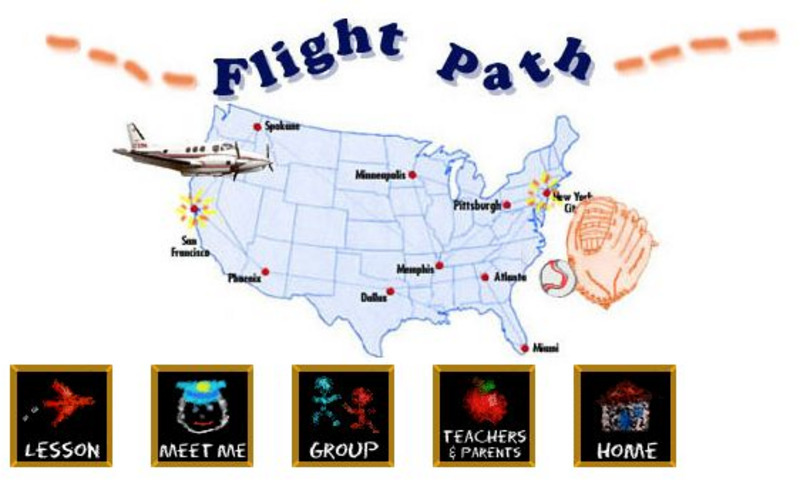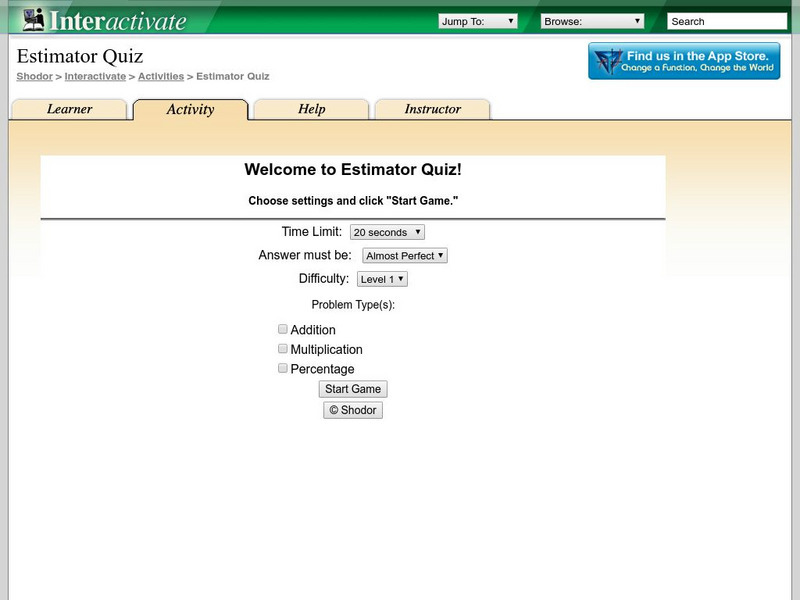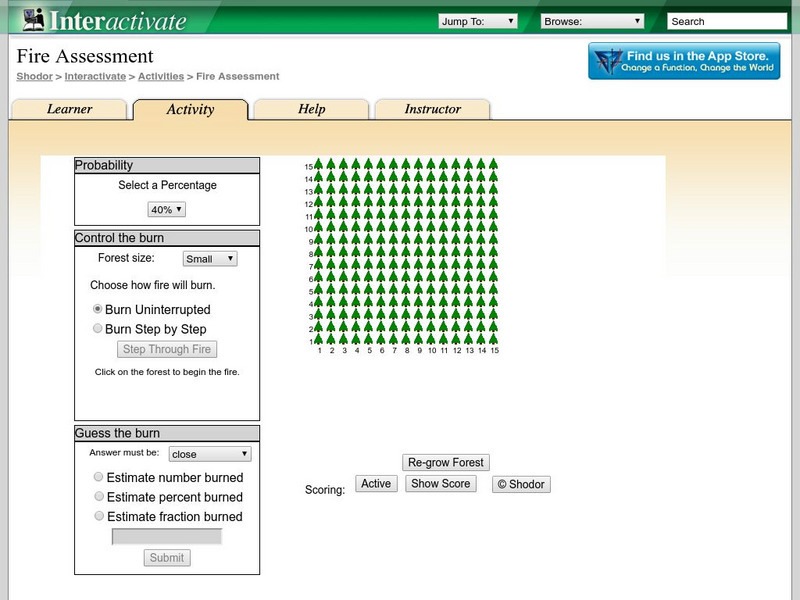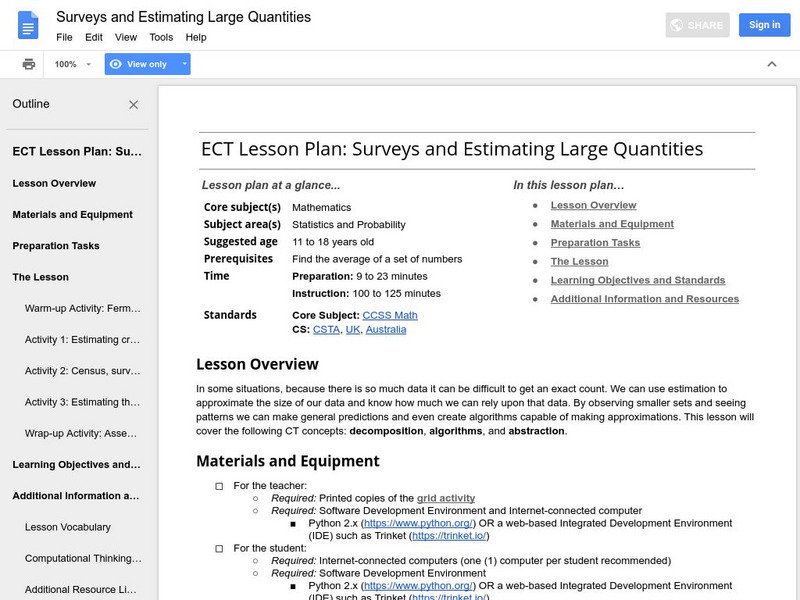Curated OER
Getting Better at Guessing
Students, in groups, examine a jar of coins to make both 'guesstimates' and estimates. They compare different estimations and complete a journal entry to summarize their findings.
Scholastic
Scholastic: Max's Math Adventures: A Sweet Story
In this Max's Math Adventure, estimate pieces of candy with Max, Ruthie, and Pop. Features include a teacher's guide, activity sheet, and extra challenges.
Scholastic
Scholastic: Max's Math Adventures: The Snowball
Join Max and Ruthie on a snow day math adventure and see how many things can happen in just one day. Teachers will like this lesson's approach to experiencing and telling time. Use the teacher's guide, activity sheet, and extra...
University of South Florida
Fcat: Using Proportions and Go Fish!
Young scholars "go fishing" and use proportions to learn how estimating is used to determine the size of a population.
Shodor Education Foundation
Shodor Interactivate: Lesson: Estimation (Elementary)
In this lesson students will practice estimation with computation, counting, length and area.
Shodor Education Foundation
Shodor Interactivate: More or Less Estimator
Practice your estimation skills by comparing the number of objects shown, the length of a curve or the area of a shape to a given number. Your choices are "greater than" or "less than".
Shodor Education Foundation
Shodor Interactivate: Coloring Remainders in Pascal's Triangle
In this activity the student will identify number patterns formed in Pascal's triangle when coloring remainders.
US Department of Education
Helping Your Child Learn Math: Math at the Grocery Store
Make grocery shopping a mathematical experience. Parents and children explore a variety of math concepts through this collection of engaging math activities. Lesson are presented in varying levels of difficulty, offer "Parent Pointers"...
PBS
Pbs Learning Media: Estimating Distance and Travel Time
In this Cyberchase video segment, the CyberSquad estimates how much air supply they will need to complete an underwater mission.
PBS
Pbs Learning Media: Estimating Time From Rate
Harry estimates how long it will take him to get to the front of a long ticket line in this Cyberchase video segment.
Science Buddies
Science Buddies: Estimation and Population Size
Have you ever wanted to take a short cut? How about when doing your math homework? In this experiment you can learn how estimation can save you time doing math calculations. But beware, some estimations are better than others. Can you...
Beacon Learning Center
Beacon Learning Center: Let's Go Shopping
Students can practice estimation by rounding decimal numbers to the nearest dollar.
Beacon Learning Center
Beacon Learning Center: Round About
Students learn about estimation using a number line and rounding rules through this interactive web lesson.
Other
Plane Math: Activities: Fill 'Er Up
Students work in groups to plan a flight around the country. The activity explores estimation, number sense, measurement, and patterns. The resource consists of a lesson plan, group activity instructions, lesson overview, and an expert...
Other
Plane Math: Activities: Pie in the Sky
Students work in groups to investigate weather and estimating cloud cover. The activity explores estimation, spatial sense, fractions, and patterns. The resource consists of a lesson plan, group activity instructions, lesson overview,...
Other
Plane Math: Activities: Flight Path
Students work in groups to find the shortest path between two cities. The activity explores problem solving, number relationships, estimation, and measurement. The resource consists of a lesson plan, group activity instructions, lesson...
Shodor Education Foundation
Shodor Interactivate: Estimator Quiz
This activity allows the student to practice estimating the results of addition multiplication and percentage problems. The activity has 3 levels of challenge.
Shodor Education Foundation
Shodor Interactivate: Fire: Estimating Percent
This interactive activity allows the student to visually practice estimation skills by estimating the number of trees and the percent of trees burned in a forest fire. There are 3 levels that provide estimating practice for large and...
University of Colorado
University of Colorado: Ph Et Interactive Simulations: Estimation
Explore size estimation in one, two and three dimensions! Multiple levels of difficulty allow for progressive skill improvement.
Mangahigh
Mangahigh: Ice, Ice, Maybe: Fast Estimation With Basic Number Calculations
Practice your arithmetic skills as you estimate the answer to questions involving addition, subtraction, multiplication, and division. Includes whole numbers, fractions, and percents. As you answer questions, you guide penguins across an...
Google
Google for Education: Surveys and Estimating Large Quantities
Students use estimation to approximate the size of a large set of data. By observing smaller sets and seeing patterns they make general predictions and even create algorithms capable of making approximations.
OpenStax
Open Stax: Physics: Approximation
On many occasions, physicists, other scientists, and engineers need to make approximations or "guesstimates" for a particular quantity. What is the distance to a certain destination? What is the approximate density of a given item? About...
TeachEngineering
Teach Engineering: Boom Construction
Student teams design their own booms (bridges) and engage in a friendly competition with other teams to test their designs. Each team strives to design a boom that is light, can hold a certain amount of weight, and is affordable to...
TeachEngineering
Teach Engineering: How High Can a Super Ball Bounce?
Students determine the coefficient of restitution (or the elasticity) for super balls. Working in pairs, they drop balls from a meter height and determine how high they bounce. They measure, record and repeat the process to gather data...



